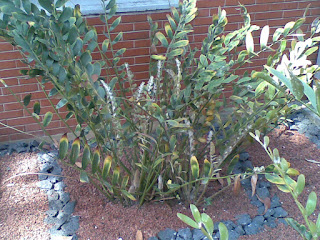La idea de escribir un
blog acerca de las plantas cicadaceas, surge a partir del hecho de que no hay mucha Información detallada
al respecto y mucho menos en español.
Es curioso que, siendo latinoamérica una de las zonas con
gran riqueza de especies de cicadaceas; halla tan poca difusión del conocimiento de las mismas. Salvo en las revistas cientificas o tesis.
El objetivo de este blog es presentar información sencilla, clara de primera mano acerca del cultivo, germinación y otras curiosidades de estas antiguas plantas; con el fin de
ayudar a difundir
y mejorar el conocimiento de las mismas.
Asi mismo, este blog no tiene fines comerciales ni de lucro, es puramente didáctico.
Comencemos con algunas generalidades:
Las cicadas como grupo de plantas ,consta de unas 200 especies; distribuidas en 10 u 11 géneros estos son: Cycas, Bowenia, Ceratozamia, Dioon, Encephalarthos, Lepidozamia, Macrozamia, Microcicas, Stangeria y Zamia .
Algunos autores
consideran a Chingua un género aparte
pero otros la incluyen junto
con las zamias.
Para su clasificación, se ha dividido el grupo de las cicadas en
3 familias:
*Cycadaceae que engloba el genero cycas.
*Stangeriaceae, que abarca el genero stangeria eriopus
*Zamiaceae que engloba todos
los demás géneros.
 En México estan presentes de forma nativa, los generos ceratozamia, dioon y zamia; de manera introducida hay cycas y encephalarthos.
En México estan presentes de forma nativa, los generos ceratozamia, dioon y zamia; de manera introducida hay cycas y encephalarthos.
Datos curiosos acerca de las cicadas:
*Presentan raíces coraloides que alojan cianobacterias que fijan nitrógeno.
*Son plantas dioicas, es decir hay plantas macho y
plantas hembra.
 Su polinización ocurre por medio de escarabajos que viven y se alimentan
en los conos de ambos sexos,
dicha relación puede considerarse una simbiosis
Su polinización ocurre por medio de escarabajos que viven y se alimentan
en los conos de ambos sexos,
dicha relación puede considerarse una simbiosis
En lo referente a su reproducción sexual, presentan anterozoides nadadores, que es una
característica primitiva en las plantas vasculares
*Sus semillas una vez liberadas, requieren un tiempo largo
de maduración del embrión, antes de estar listo para poder germinar.
Por esta razon, algunos las consideran plantas que nacen de "huevo"
*Las cicadaceas presentan sustancias tóxicas(cicacinas) en
todas sus partes, por la cual es mejor evitar comerlas.
*su
distribución abarca todas las regiones
tropicales del mundo
Habitan desde zonas costeras, selvas caducifolias, perenifolias, bosques mesófilos, bosques de pino-encino,
manglares…etc.
Es curioso verlas crecer en acantilados pegadas a las paredes de roca,
creciendo en grietas y huecos de las rocas. Algunas crecen en suelos pedregosos
con cierto grado de inclinación lo que
favorece un buen drenaje a sus gruesas y delicadas raíces.
* Su crecimiento es extremadamente lento comparado con el de otras plantas; el proceso de germinacion puede tomar varios años (2-5)
* Aunque algunas especies presentan forma arborecente, carecen de madera como tal; sus tejidos son parenquimatosos con abundantes depósitos de almidón.






















